11 Movement Snacks That Add Years to Your Life
Short bursts of movement—what fitness writers now call "movement snacks"—are tiny habits with a big ripple effect on long-term health. These short, focused bursts of activity are easy to fit into a busy day and can improve cardiovascular fitness, strength, balance, and mobility when done consistently. Research summarized by journalists and exercise scientists points to measurable benefits: for example, a McMaster University pilot-style study found that repeated 20-second stair-climbing bursts, done three times a day for six weeks, produced modest but meaningful improvements in cardiorespiratory fitness. Other work on VILPA, or vigorous intermittent lifestyle physical activity, suggests that very brief, frequent efforts throughout the day relate to lower risk of serious illnesses when combined with overall active habits. That doesn’t mean every brief moment replaces a longer workout, but it does mean that movement snacks add up. They lower the barrier to activity, protect function as we age, and make consistent care of the body feel doable rather than daunting. The list below offers 11 practical movement snacks you can start using today. Each entry includes a simple how-to, a short explanation of why it helps your long-term health, and gentle modification ideas so you can tailor the move to your level. Think of these as friendly nudges toward more strength and steadiness over the years—small moments of care that honor your body and its future.
1. Stair-climb bursts (20 seconds)

Stair-climb bursts are brief, powerful climbs up and down a flight of stairs done at a quick pace for about 20 seconds. A McMaster University study—summarized in reporting on movement snacks—showed that doing three 20-second stair bursts daily for six weeks increased cardiorespiratory fitness by roughly five percent, a meaningful improvement for everyday stamina and heart health. Practically, you might step up quickly for 20 seconds, recover with slow steps or standing for 60–90 seconds, then repeat two more times spread through the day. This pattern raises heart rate and engages large leg muscles, which supports vascular health and metabolic regulation. Safety matters: start at a pace that challenges but doesn’t strain you, hold the handrail if balance is unsure, and skip the fast version if stairs are unsafe or if recent heart conditions exist—check with a clinician when in doubt. Alternatives include marching briskly in place or doing a short hill walk of similar intensity. Over weeks, you can increase intensity by taking slightly faster steps or by adding a second 20-second climb to one of your daily sessions. The goal is consistency and gradual progress, not all-out effort every time.
2. One-minute brisk walks
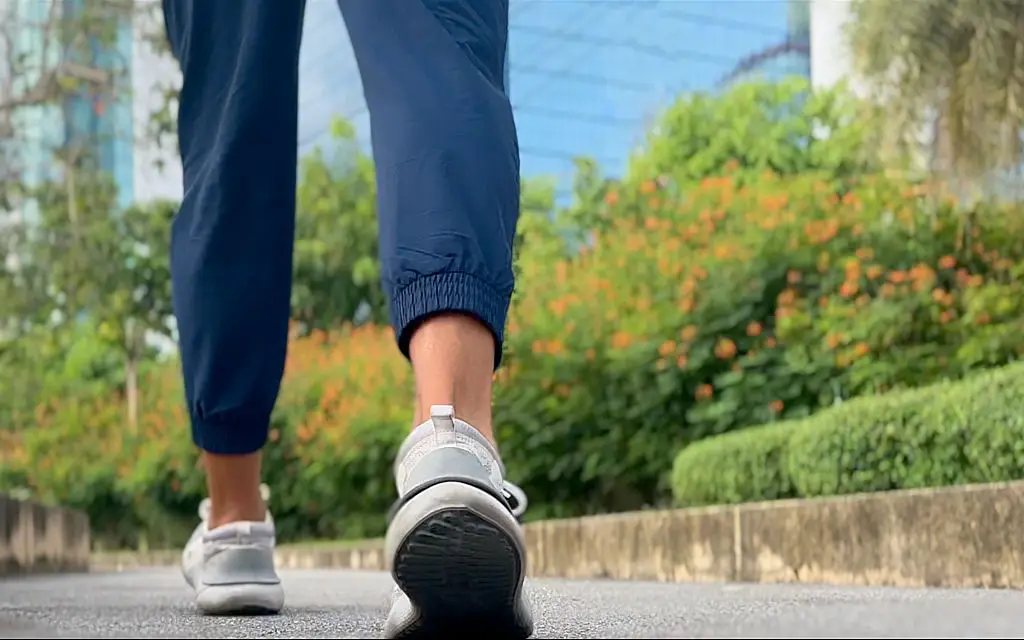
A one-minute brisk walk is a simple, accessible movement snack that raises your heart rate, improves circulation, and resets posture and mood. It’s an easy habit to stack into life: walk around the block after lunch, pace during phone calls, or step outside between tasks. Even short walks stimulate large muscle groups and help control blood sugar after meals, which over time contributes to metabolic health and reduced chronic disease risk. For longevity, frequent low-to-moderate intensity activity helps keep arteries healthy and supports daily function. Aim for a pace that feels brisk—breathing heavier but still able to speak a few words. If walking briskly isn’t possible, try marching in place with lifted knees or using a stationary cardio machine for a minute. To build habit, choose consistent anchors, like standing up whenever a timer rings, then walking for one minute. Over weeks, add extra one-minute walks until multiple micro-walks combine into meaningful daily movement. Remember, regularity matters more than single long sessions; the cumulative effect of many small walks supports long-term resilience.
3. Air squats during breaks
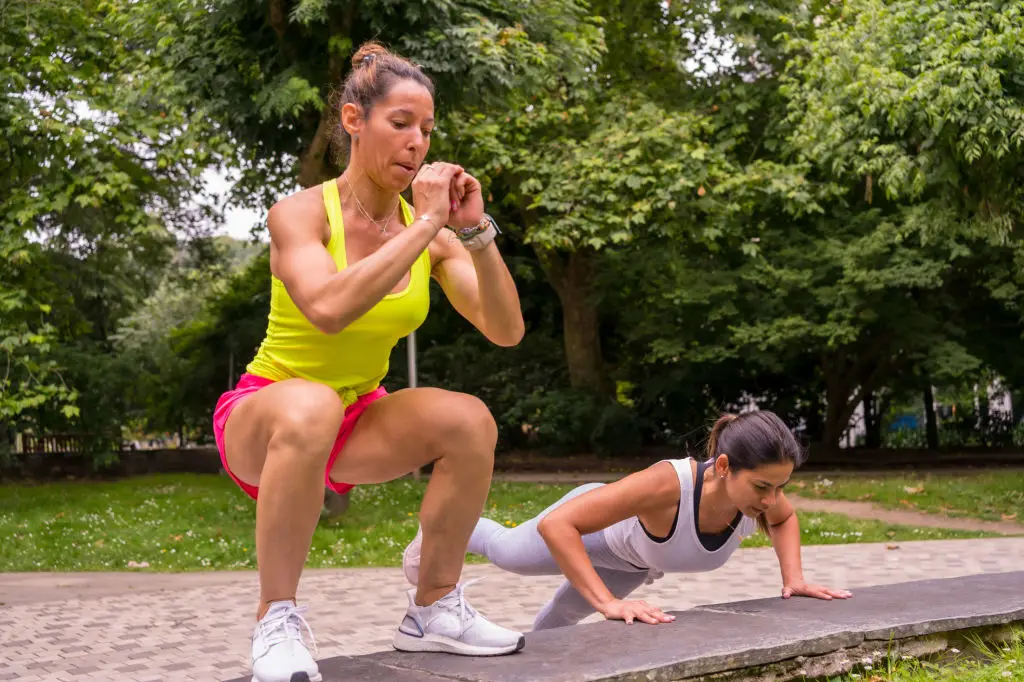
Air squats—standing, then bending the knees and hips to sit back briefly—are a compact strength snack you can do in your home office or kitchen. Squats load the largest muscles in the body, which supports bone health, joint stability, and the ability to rise from chairs and steps as we age. Try a set of 10–15 air squats during a short break or do timed bursts of 30 seconds repeated two or three times through the day. Keep weight in your heels, chest lifted, and knees tracking over toes for safe mechanics. If full squats are challenging, use a chair behind you and sit to stand repeatedly, or hold onto a countertop for balance. Progress by increasing reps, adding a slower tempo to boost muscle time under tension, or holding light household items for extra resistance. Because squats are functional, they translate directly to daily tasks like lifting groceries and climbing stairs. Aim for steady, pain-free practice rather than maximal depth; small consistent sets will preserve strength and independence over time. If you have knee or hip pain, choose a supported variation and consult a physical therapist for personalized guidance.
4. Wall sits for leg endurance
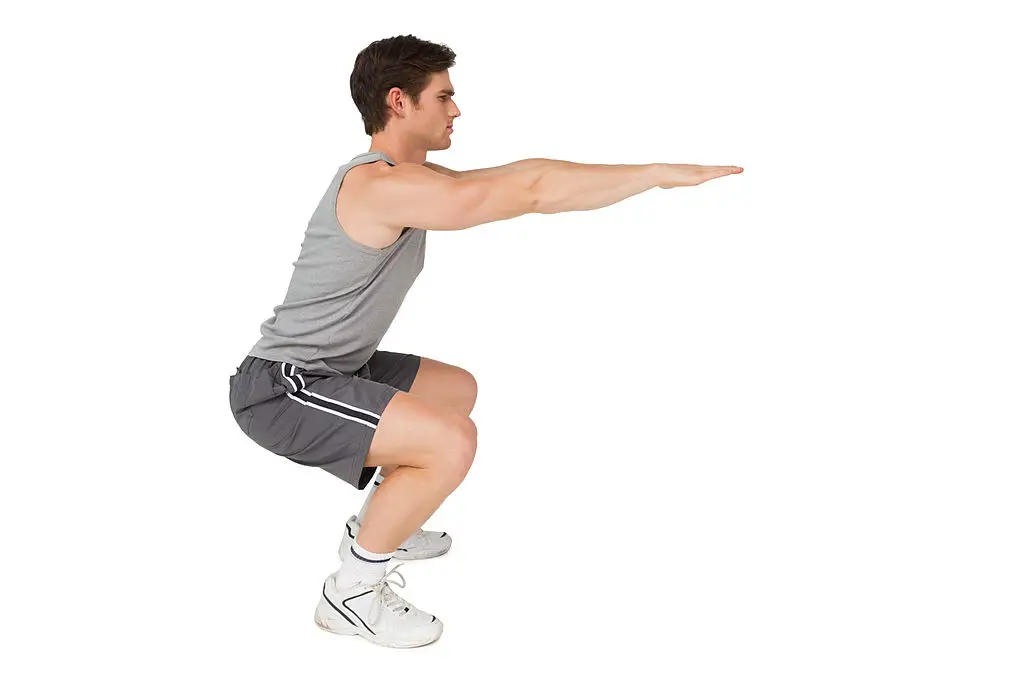
Wall sits are a static leg-hold where you lean your back against a wall and bend knees to about 90 degrees, holding the position for a set time. They build muscular endurance in the quadriceps and glutes while requiring minimal space or equipment—ideal for short movement snacks between meetings. Aim for three 30-second holds with a minute of rest between each, or adjust times to match your comfort and fitness level. Holding is lower-impact than repetitive squats but still stimulates strength and circulation, which supports mobility and daily function as we age. To modify, start with a higher knee angle so hips aren’t as low, or perform shorter holds and add more repetitions. Breathe steadily and avoid holding your breath. People with knee issues should test gentle variations first and consult a clinician for persistent pain. Over weeks, increase hold duration or reduce rest to build endurance. Paired with brief walking and hip mobility work, wall sits help preserve the leg power needed for independence and safe movement across the lifespan.
5. Plank holds for core resilience

Planks are a time-efficient core-strength snack that supports posture, spinal stability, and balance—key elements for aging well. A typical micro-session might be a 20–40 second forearm or high-plank hold repeated two or three times across the day. Focus on a straight line from head to heels, drawing the navel gently toward the spine without tensing the neck. Strong core muscles make everyday tasks easier and reduce the strain on joints. If a full plank is too demanding, start with incline planks using a kitchen counter or table, or reduce hold time and increase sets. Those with wrist or shoulder issues can use forearms or seek guided modifications. Gradual progression—adding five to ten seconds every few sessions—builds resilience without overwhelming recovery systems. Pair planks with breathing practice to encourage calm focus and improved movement efficiency. Over months, consistent plank practice helps maintain upright posture and reduces compensatory patterns that can lead to pain or decreased mobility.
6. Push-up variations

Push-ups strengthen the chest, shoulders, and triceps and support the upper-body strength needed for daily activities like lifting and pushing. For a movement snack, try short sets of 6–12 reps a few times daily, or perform 20–30 second push-up bursts with a minute of rest between repeats. Modify as needed: do incline push-ups against a countertop or wall, or perform knee push-ups to reduce load. These variations keep intensity manageable while still stimulating muscle and bone. Upper-body strength helps preserve independence, from getting up from the floor to carrying groceries, and it contributes to balanced posture. When practicing, keep a straight line from head to hips, core engaged, and shoulders away from the ears to protect joints. If shoulder pain exists, back off to a gentler angle and consult a clinician for form adjustments. Over time, increasing reps or lowering the incline helps build carrying capacity and daily resilience, which are meaningful contributors to long-term functional health.
7. Walking lunges or stationary lunges
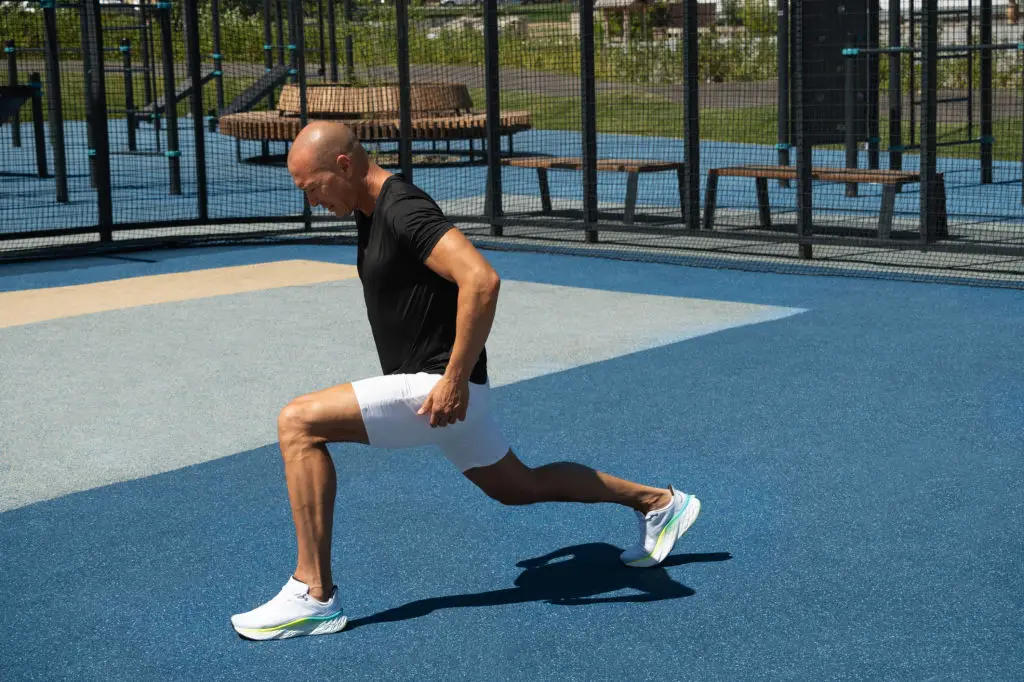
Lunges are single-leg movements that build strength, coordination, and stepping power—qualities that support gait, balance, and fall prevention. Do 8–12 lunges per leg as a micro-workout, or alternate short 30-second lunge bursts across the day. Focus on a tall torso, controlled knee tracking, and a steady pace rather than speed. If balance is a concern, perform stationary lunges holding a countertop or chair for support, or reduce depth to a partial lunge. Walking lunges can also be done when outdoors, turning errands into purposeful strength work. For people with knee or hip concerns, begin with small ranges of motion and consult a physical therapist for progression. Because walking lunges engage multiple joints and muscle groups, they promote functional strength that makes everyday activities safer and easier, supporting long-term musculoskeletal health. Gradual increases in reps or adding light hand weights help progression without overwhelming the body.
8. Jumping jacks or low-impact marching

Jumping jacks are a quick way to elevate heart rate and increase whole-body coordination; for those with joint limitations, low-impact marching serves the same purpose. Try 20–40 seconds of jumping jacks or a fast march, repeated two to three times through the day. These short cardio bursts fit easily between tasks and help condition the heart and lungs when combined with regular activity. For lower-impact alternatives, step-touch arms overhead and lift knees instead of jumping, keeping intensity up while reducing stress on joints. Pay attention to landing softly and using steady arm motion to protect shoulders. The goal is frequent cardiovascular stimulation rather than a single long session. Over months, repeated micro-cardio sessions contribute to heart-healthy habits and improve energy—two foundations for aging with better capacity and independence. If dizziness or chest discomfort occurs, stop and consult medical care.
9. Farmer carry (heavy-carry practice)

Carrying weight across a short route—often called a farmer carry—is a practical strength snack that mirrors daily tasks like bringing in groceries. Pick up a pair of grocery bags, kettlebells, or weighted containers and walk for 30–60 seconds, rest, then repeat once or twice. This exercise challenges grip strength, core stability, and posture while loading the skeleton in functional patterns that support bone health. Maintain upright posture, keep shoulders down and back, and engage the core to protect the spine. Begin with comfortable loads and short distances, and increase weight slowly as strength improves. If balance is a concern, use lighter weights and shorter carries, or perform the carry with a support nearby. Farmer carries translate directly to everyday independence and have the practical benefit of being easy to integrate into routine chores. As part of consistent micro-workouts, they provide meaningful strength stimulus that supports durable function over time.
10. Joint mobility circles and focused flows

Joint mobility circles are gentle, deliberate movements that restore safe range of motion in shoulders, hips, ankles, and the spine. Spend 60–90 seconds on a simple mobility flow—hip circles, shoulder rolls, and ankle pumps—two or three times daily to maintain tissue health and ease of movement. Mobility supports longevity by preserving function and reducing the compensations that lead to pain and decreased activity. Keep movements slow and controlled, breathing smoothly, and stop if any movement causes sharp pain. For desk workers, neck and thoracic mobility breaks can counteract forward-head posture and reduce stiffness. Mobility practice also primes the nervous system so strength moves feel easier. These short flows are low-risk, high-reward, and pair well with strength micro-workouts for a balanced daily approach to movement. Progress by increasing range slightly or adding gentle dynamic reaches as comfort allows.
11. Single-leg balance challenges

Single-leg balance work is a compact, powerful snack for preventing falls and maintaining coordination. Practice standing on one foot for 20–40 seconds, repeat on the other side, and aim for two to three brief sessions per day. Use a countertop or chair for support if needed, and progress to eyes-closed or gentle head turns when balance improves. Balance training refines proprioception and ankle/hip strategies that the body uses to recover from trips—skills that directly reduce fall-related injury risk as we age. For added challenge, perform slow squats or reach the free foot forward, sideways, or back while maintaining balance. Small daily investments in balance compound into much larger protective effects over time, helping to preserve mobility and confidence in everyday life. If dizziness or new neurological symptoms occur, consult a healthcare provider before progressing.
Build small habits, stack small wins
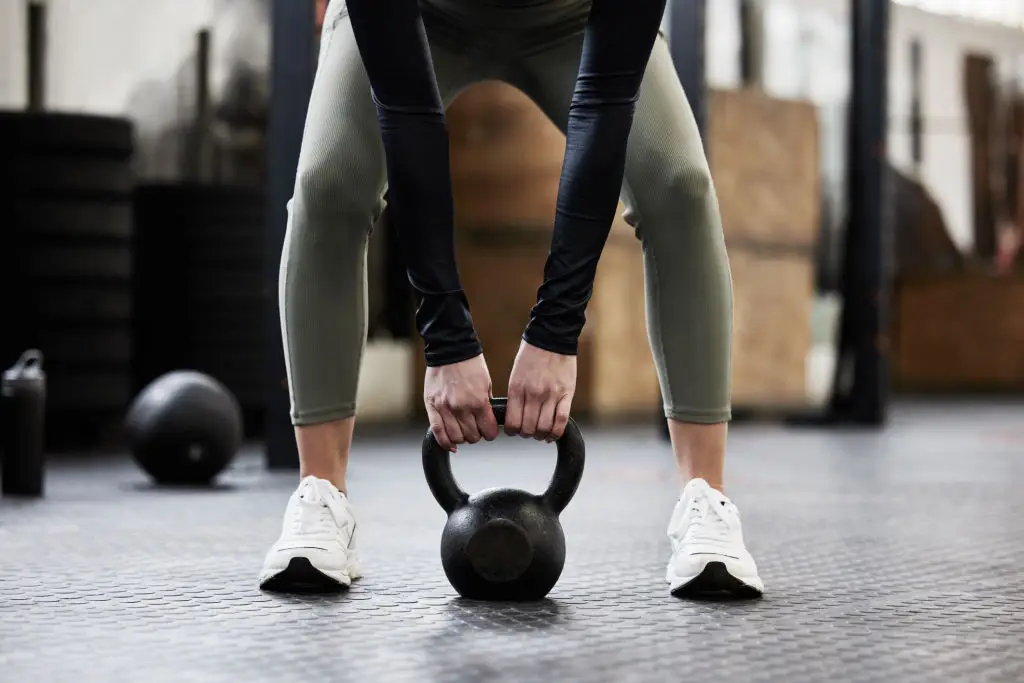
Movement snacks aren’t a magic bullet that replaces longer exercise sessions, but they are a gentle, practical way to build meaningful health gains over time. The evidence and expert perspectives we’ve summarized show that short, frequent efforts—like 20-second stair bursts, minute-long walks, and brief strength or balance challenges—raise fitness markers and support the body systems that matter for healthy aging. The real power lies in consistency and fit: choose two or three micro-workouts that feel doable, then anchor them to daily cues such as finishing a cup of coffee, taking a call, or returning from errands. Aim for progressive, measurable changes like small increases in duration, more repetitions, or reduced support. Safety is essential—start conservatively, use modifications, and check with a clinician when health concerns exist. Over months and years, these tiny, repeatable habits add up to more strength, steadiness, and independence. Think of movement snacks as ongoing self-care: brief moments that honor your body and keep you moving forward. When you approach them with curiosity and kindness, they become sustainable steps that contribute to a longer, more active life.